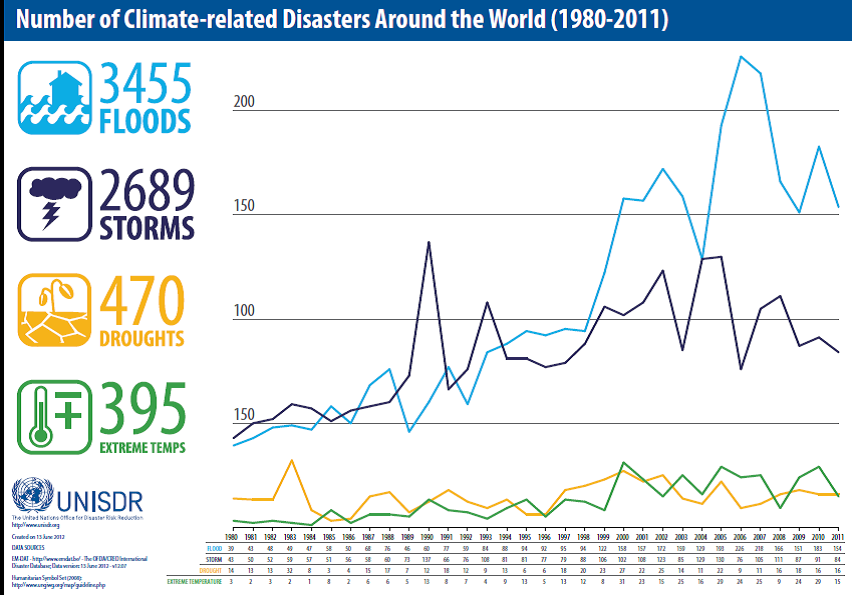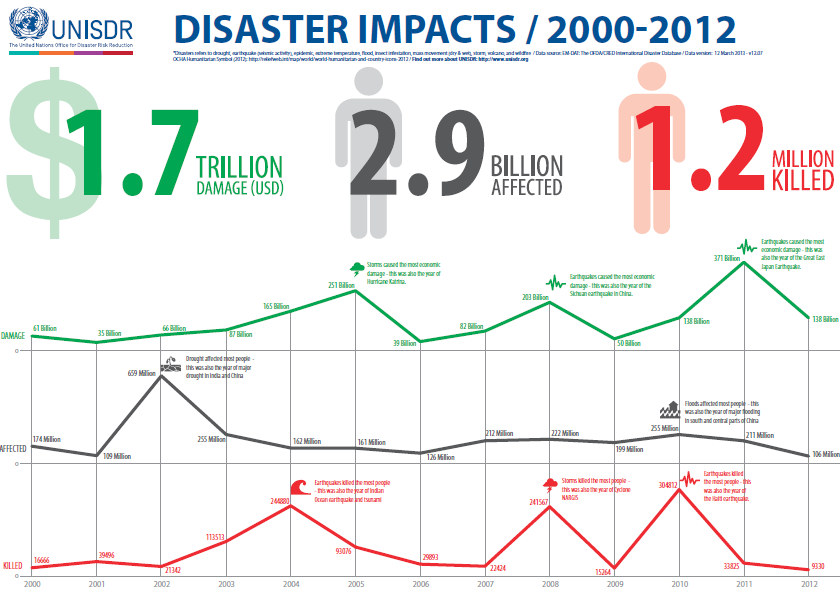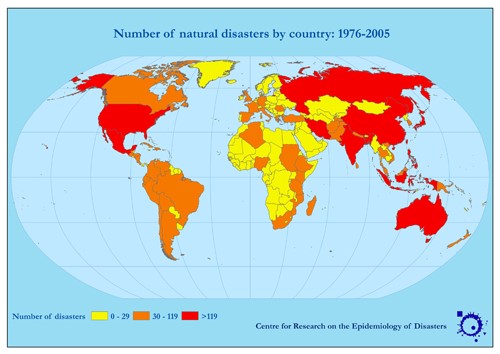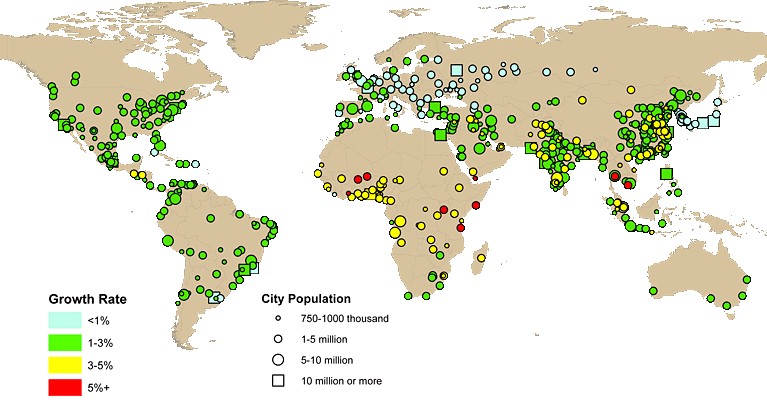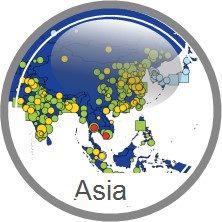Knowledge fuels change - Support energypedia!
For over 10 years, energypedia has been connecting energy experts around the world — helping them share knowledge, learn from each other, and accelerate the global energy transition.
Today, we ask for your support to keep this platform free and accessible to all.
Even a small contribution makes a big difference! If just 10–20% of our 60,000+ monthly visitors donated the equivalent of a cup of coffee — €5 — Energypedia would be fully funded for a whole year.
Is the knowledge you’ve gained through Energypedia this year worth €5 or more?
Your donation keeps the platform running, helps us create new knowledge products, and contributes directly to achieving SDG 7.
Thank you for your support, your donation, big or small, truly matters!
Resilience in the Transport Sector
Overview/Impact and importance of Resilience in transport sector
Globally the number of natural disasters, i.e. climate related disasters such as flooding, drought, storms/cyclone and extreme temperature changes are increasing worldwide, particularly in the last few years.
Within the period from 2000-2012, climate related disasters* had a serious impact on the world. In total they have caused [2]
- US$ 1.7 trillion of damage
- 2.9 billion people have been directly affected
- 1.2 million people have been killed
- Within this section we will be considering a wide range of natural disasters but will be primarily focusing on natural disasters associated with climate change.
It has been forecasted that if the trend continuous damages could reach up to 20% of the entire global GDP at the end of the century.[4]
Over the period of the last 10 years, of the 10 deadliest disasters that have occurred worldwide, 7 have occurred within counties of Asia. In the graph below, the countries in red experienced more than 119 natural disasters. A closer look reveals that most of these countries lie in the Asian region.[5]
Urbanization exacerbates the damages that natural disasters causes, thus necessitating the need for communities to become resilient[6].
Resilience is defined as the ability of an individual, household, community, a country or a region to withstand, adapt and quickly recover from stresses and shocks caused by natural disasters.[7]
An important strategy to increase overall resilience is to improve the resilience of the transport system. Under normal conditions, it provides capable mobility options for moving passengers as well as goods. However under emergency or evacuation situations the significance of a system’s utility and value as a support role become more apparent. The same holds true for the system’s ability to support post-disaster recovery and supply efforts[8].Transport systems allow movements away from adverse conditions (i.e. removing things or people away from the destruction or damage being caused) or towards areas of greater need (i.e. provide resources to help with recovery work). In addition, the longer a transport system remains disrupted during and after a shock, the more severe economic losses will be for community/region. Climate changes taking place, in form of more natural disasters occurring, have the ability of severely disrupting transport services and/or damaging the infrastructure thus limiting mobility or putting it to a standstill in time of dire need[9].
Thus an efficient transportation system can play an important role towards making the community resilient[10]. The limited funds that are available for supporting transport infrastructure need to be used in an efficient and just manner in order to make the communities’ mobility resilient. This can be done by designing, developing and maintaining transport infrastructure that is able to meet the existing and future climate change conditions.
The following tables provide information on resources and projects on resilience in a transport sector, with a focus on adaptation to climate change. Please also have a look at the article Adapting Urban Transport to Climate Change (https://energypedia.info/wiki/Adapting_Urban_Transport_to_Climate_Change) which provides more in-depth information.
Projects and Resources in field of Resilience and Transport
Publications and Resources
Under this thematic area, all work that has been published or reported in field of Transport Resilience is mentioned. The table below provides highlight of the published work.
| Title |
Publisher /year |
Thematic area / Keywords | Description | Links |
|---|---|---|---|---|
| Resilient Mobility | TRL | General, Infrastructure | Till date the international focus on climate change adaptation action has understandably been directed towards mitigating the vulnerabilities in those sectors which directly or indirectly affects the food, water and shelter value chain. However, little focus has been directed for the transport sector, which plays a vital role in the provision of the above mentioned fundamental services, which in itself susceptible towards aftermath of climate change. The Resilient Mobility initiative promotes actions and policy-making to develop robust transport networks, resilient to the future climate and extreme weather events. | Read more |
| Climate Change Risk Assessment for the Transport Sector (CCRA) | UK Government | Infrastructure, Climate change | The Transport Sector Report for the UK Climate Change Risk Assessment (CCRA). It identifies the potential impacts of climate change on the UK transport systems, looking in more detail at some of the key impacts. The CCRA is a national review of climate change risks, which under the Climate Change Act 2008 is required to be carried out every five years. | Read more |
| Forecasting transportation infrastructure slope failures in a changing climate | Transport, Climate change, Network security | The changing climate will influence the way the UK transport network performs. An aspect of this are the potential changes in the modes and frequency of slope failures, both natural and constructed. Forecasting the future behaviour of infrastructure slopes will allow development of maintenance and management strategies that will result in increased resilience of the of the transport network | Read more | |
| Assessing Transport Network Security in the Face of Climate Change | FUTURENET Team/ Jan 2012 | Transport, Climate change, Network security | FUTURENET was a multi-partner, multi-disciplinary research project, investigating the development of a network resilience assessment methodology. It considers changes in climate and weather anticipated for 2050, and assesses the impact of these on the principal modes of transport (road, rail and air). It also seeks to create a generic methodology that might be applied to any transport network. The project finished in April 2013; the paper describes the work carried out to date, and proposed work for the future. | Read more |
| Financing the Resilient City | ICLEI/2011 | Reducing Urban Risk, Financing | A white paper by ICLEI (Local Governments for Sustainability) provides a strategy on adapting urban areas to climate change, focusing on the required finance. The report calls for mainstreaming climate and disaster risk reduction in planning processes, project design and development decision making; the development of specialised financial instruments and the improvement of local capacity for redevelopment. | Read more |
| The London Climate Change Strategy | Greater London Authority/ 2011 | Reducing urban risk, infrastructure | This strategy identifies the key impacts of climate change on the city of London and the actions that are required to adapt. | Read more |
| Guidelines for Climate Proofing Investment in the Transport Sector: Road Infrastructure Projects | Asian Development bank/ 2011 | Transport, climate change | This publication aims to present a step-by-step methodological approach to assist project teams to incorporate climate change adaptation measures into transport sector investment projects. While the focus of the publication is on the project level, an improved understanding of climate change impacts should also be used in the design of infrastructure planning and development policies and strategies to ensure appropriate resource allocation. Though the transport sector includes roads, waterways, rails, and airborne transport, this publication focuses solely on road infrastructure. | Read more |
| Building a Low-Carbon, Climate-Resilient Transport Sector | Asian Development bank/ 2009 | Transport, Climate change, Low-carbon | Opening remarks by Haruhiko Kuroda, ADB President, at the Transport and Climate Change Seminar on Responding to Climate Change in Asia and the Pacific, Copenhagen, Denmark | Read More |
| Decision Making in a changing Climate. Adaption, Challenges and Choices | World Resource Institute/ 2010-11 | Decision making, Climate change | Recent extreme weather events including floods, heat waves, and droughts present a vivid image of the direction the world is heading towards. As climate change intensifies, more events like these, combined with long-term changes including rise in sea-levels, rapid melting of glaciers at the poles, and shifting of precipitation patterns — will have profound impacts on people, earth’s ecosystems and infrastructure. This publication explores five key elements—public engagement, decision-relevant information, institutional design, tools for planning and policymaking, and resources—that are expected to significantly strengthen the ability of any national government to make effective adaptation decisions. | Read More |
| Maintaining Pavements in a Changing Climate | TRL/2008 | Technical, road maintenance, climate change | Climate change - and the extreme weather associated with it - is having a considerable impact on the UK's highways and pavements. This publication provides recommendations on how to reduce the risks associated with climate change by ensuring good construction and maintenance practice and using adaptive maintenance techniques. Also case studies demonstrating the impact that weather can have on highways are illustrated. Adaptive techniques already trialed, both in the UK and abroad, are used to illustrate the guidance. | Read more |
| Evaluating Transportation Resilience | VTPI/2014 | Technical, Transport demand, Climate change | Resilience (also called reliability and risk management) refers to a system’s ability to accommodate variable and unexpected conditions without catastrophic failure, or “the capacity to absorb shocks gracefully” (Foster, 1993). Security refers to freedom from danger or fear, which is an important goal of resilience. These concepts have many implications for planning in general, and transportation planning in particular (Berdica, 2002; Husdal, 2005). Resilience can be evaluated at various levels. | Read More |
| Making Transport Resilient. Country Report: Ethiopia. | World Bank/2010 | Infrastructure, climate change, report | This report is the output of the World Bank-financed study on Making Transport Climate Resilient for Ethiopia, which is a Sub-Saharan Africa initiative to respond to the impact of climate changes on road transport. The study is based on four climate scenarios selected by the World Bank consistent with the scenarios used in the study “Economics of Adaptation to Climate Change”. | Read More |
| Resilient Transportation systems in a post-disaster environment. A Case Study of Opportunities Realized and Missed in the Greater New Orleans Region | Gulf Coast Research Center for Evacuation and Transportation Resiliency/ 2010 | Post-disaster, report | Based upon our research in Post-Katrina New Orleans, transportation resiliency is defined as a system’s ability to function before, during and after major disruptions through reliance upon multiple mobility options. The importance of a resilient transportation system becomes more apparent during disasters where multiple options for mobility are necessary for both passenger and goods movement due to the potential loss of one or more modes. | Read more |
| Adaptation to climate change in the transport sector | Klaus Eisenack,; Rebecca Stecker,; Diana Reckien,; Esther Hoffmann/ 2011 | Transport, financing, climate change, | The paper identifies the literature that deals with adaptation to climate change in the transport sector by means of an extensive search, and presents a systematic review of the publications. The paper shows that a broad diversity of actors is relevant for adaptation in the transport sector – ranging from transportation service providers to public and private sector actors and private households. Most adaptations discussed in the literature require inputs in the form of technical means, institutional means, and knowledge. A substantial share of the identified adaptations follows a top-down adaptation policy pattern where a public or hybrid operator initiates action that affects private actors. The review shows that the existing literature either focuses on overly general and vague proposals, or on detailed technical measures. The paper concludes that the knowledge on adapting transport to climate change is still in a stage of infancy and suggests fields for further research. | Read more |
| National Infrastructure Protection Plan Partnering to enhance protection and resiliency | US Deptt for homeland security/ 2009 | Technical, Climate Change, Risk on Transport | This report addresses the protection and resiliency of the critical infrastructure and key resources (CIKR) of the United States. It describes the authorities, roles, and responsibilities of the Department of Homeland Security (DHS) personnel, outlines the CIKR Protection Program Strategy, examines DHS partnerships, and evaluates the long term efficacy of the CIKR Protection Program. | Read more |
| Infrastructure Resilience to Disasters | Stephanie E. Chang/ 2009 | Infrastructure Resilience | Much of the early work on infrastructure in disasters was on understanding the mechanics of how components of infrastructure systems perform when subjected to extreme forces or conditions. This basic understanding was then extended to the performance of component assemblages. Studies ranged from field work to laboratory simulations with scale models and computer-based analyses. While these remain active areas of inquiry, new research themes have emerged to address some of the complexities of infrastructures, which include societal as well as technical issues. How, for instance, will the failure of one bridge affect businesses throughout the urban area that rely on the transportation system? How will the failure of one infrastructure system disrupt other infrastructure systems? How can repairs following a disaster be planned so they minimize social and economic losses? Such questions have prompted research that is, by necessity, interdisciplinary which is the focus of this report. | Read More |
| Climate change plans and infrastructure in Asian Cities | Clean Air Initiative for Asian Cities and the Cities Development Initiative for Asia/2012 | Climate Change, Infrastructure | This regional study of 900 cities gives an insight into climate change priorities in urban policies, plans and investments of Asian cities. | Read more |
| Structural resilience of core port infrastructure in a changing climate | RMIT University/2013 | Climate Change, Resilience, Sea Ports | This document identifies key port infrastructure elements affected by climate change; the document investigates the deterioration mechanisms relevant to these structural components, and forecasts the rate of deterioration of structures over a period for which climate scientists could provide the necessary projections. The output is presented in the form of a software tool which addresses a number of deterioration mechanisms which affect port structures, according to six different climate futures. This will allow a port engineer to ascertain the changes needed in maintenance of port infrastructure over a 70-year time horizon. | Read more |
| Climate Change and Infrastructure, Urban System and Vulnerabilities | US Deptt of Energy/ 2012 | Climate Change, Infrastructure | The central theme of the report is that vulnerabilities and impacts are issues beyond physical infrastructures themselves. The concern is with the value of services provided by infrastructures, where the true consequences of impacts and disruptions involve not only the costs associated with the clean-up, repair, and/or replacement of affected infrastructures but also economic, social, and environmental effects as supply chains are disrupted, economic activities are suspended, and/or social well-being is threatened. | Read More |
| Building Resilience into Fragile Transportation Network | Anna Nagurney/ 2011 | Climate Change, Transport, Disaster Recovery | Presentation given by Anna Nagurney at the 90th annual meeting of TRB in 2011. The main aim of the presentation was to highlight the importance of Building Resilience into Fragile Transportation Network in an era of increasing disasters. | Read more |
| A guide to planning resources on transportation and hazards | TRB/2009 | Planning and Administration, Operations and Safety, Aviation, Public Transit, Rail, Freight Transportation, Marine Transportation, Security | TRB's National Cooperative Highway Research Program (NCHRP) and Transit Cooperative Research Program (TCRP) jointly released “A Guide to Planning Resources on Transportation and Hazards”. The report highlights a framework for thinking about the stages of a disaster, and identifies some of the most current and innovative hazard-related research. | Read more |
| National Climate Change Assessment: Transportation Chapter | U.S. Global Change Research Program | Climate Change, Adaption, Risk, Financial Risk | The U.S. Global Change Research Program has released a report that has a chapter about the effects of climate change on the transportation sector—including on fixed node infrastructure, fixed route infrastructure, and different types of vehicles. | Read More |
Research Projects
Under this thematic area, all research work that has been undertaken in field of Transport Resilience is mentioned. The table below provides highlight of the research work undertaken
| Title | Thematic area / keywords | Description | Links |
|---|---|---|---|
| Futurenet - Future resilient transport networks | Infrastructure, Climate Change | The overall aim of FUTURENET is to help answer the questions: what will be the nature of the UK transport system in 2050, both in terms of its physical characteristics and its usage, and what will be the shape of the transport network in 2050 that will be most resilient to climate change? This will be achieved through a series of targeted objectives, including; the development of possible UK transport scenarios,
•the development of conceptual models of weather / climate induced failure mechanisms of transport systems, together with meteorological and climatic trigger levels where these can be identified • the development of a modelling methodology that will integrate the work of the first two objectives, and allow the effect of climate change on the resilience of transport networks to be systematically studied • the development of generic methods that can be applied to other transport corridors and the dissemination of the results amongst stakeholders, policy makers and practitioners |
Read more |
| Real-time planning for resillient transport futures | Technical, Planning | Many topic for research with the umbrella | More Information |
| Road Owners Getting to Grips with Climate Change | Technical, transport, climate change | The “Road Owners Getting to Grips with Climate Change” research programme aimed at providing road authorities all across Europe with the knowledge and tools necessary to "get to grips" with climate change and its effects on all elements of road management by adapting design rules, updating and improving data collection, and developing risk management methods. | Read more |
| State of the art of likely effect of climate change on current roads, ENR SRO3 report, October 2009 | Technical, road maintenance, climate change | The future climate change and its influence on the performance of the road network is an issue that is concerning more and more countries. This report shows how the predicted changes will affect highways performance, most likely in a negative way. If temperatures rise and precipitation increases, it looks as though present design theory and construction techniques must be amended to accommodate for these differences of climates. | Read more |
| Alternative materials and methods to enhance resistance to climate change, ENR SRO3 report, January 2010 | Technical, Road maintenance, Climate change | This report shows a summary of the alternative ways and materials that can be used in order to reduce the negative effects of climate on the road pavement?, with particular attention to the sub-base layer. The report mainly focuses on presenting different types of alternative base and sub-base materials that can potentially reduce the influence of water on the strength. | Read More |
| Study of water effects on asphalt and porous asphalt, ENR SRO3 report, June 2010 | Technical, Road maintenance, Climate change | This literature review will focus on the effects of moisture on asphalt pavements. The report provides an introduction to what might happen to asphalt pavements in the event of climate change. Specifically, what negative effects might events of this nature have, and what tools does engineers have to mitigate such issues. The conclusions will be presented based on the available knowledge using existing asphalt technology and climate change predictions. These conclusions will focus on the impacts of moisture on asphalt, and specifically how increased rainfall may promote failures of asphalt pavements. | Read more |
| Climate Change Projections for Variables Affecting Road Networks in Europe, ENR SRO3 report, April 2010 | Technical, Road maintenance, Climate change | In this report climate change projections are presented for those climate variables that were considered most likely to affect the long-term performance of road networks in Europe. These projections are based on climate simulations by a regional climate model and using two plausible future emission scenarios. The results are presented as maps. | Read More |
| Building a More Disaster and Climate Resilient Transport Sector in Papua New Guinea | Transport, Risk, Climate change | The object of the project is to support the recipient
• to develop suitable tools for evaluation and communication of the risks related to natural hazards, • to sensitise decision makers as to the potential associated losses, • to understand the causes and consequences of disasters to the transport sector and • to develop evidence based strategies for risk management in the transport sector |
More information |
| Transportation Network Resiliency: A Study of Self-Annealing | Disaster, Transport Resilience | Transportation networks, as important lifelines linking communities and goods, are indispensable for the smooth functioning of society. These networks are, however, fragile and vulnerable to natural and man-made disasters, which can disrupt their vital functionality. The role of the transportation sector becomes more crucial during disasters due to its role in pre-disaster evacuation as well as post-disaster recovery. Authorities need to understand the degree of resilience within the transportation system under their jurisdiction and plan for improvements. In this research, attempts have been made to deal with resilience in quantitative ways to provide defensible data to decision makers to support investment strategies. The objective of this research is to create a conceptual framework to quantify resilience and discuss quantitatively the properties determining resilience of transportation networks. The concepts presented are applied to a test network to illustrate the mathematical procedures. Such methods can help decision makers analyze relative improvements in resiliency as a consequence of proposed project alternatives and help to perform benefit-cost analysis for such projects. | Read More |
Implementation Projects
Under this thematic area, implementation work that has been undertaken in field of Transport Resilience is mentioned.
| Title | Thematic area / keywords | Description | Links |
|---|---|---|---|
|
Climate Change Vulnerability Assessment Pilots (Impact region:USA) |
Climate Change, Risk on Transport | This project funded by DOTs and MPOs aims to conduct a pilot Conceptual Model to use in conducting vulnerability and risk assessments of infrastructure to the projected impacts of global climate change (GCC). The purpose of the pilots was twofolds; 1) to assist State DOTs and MPOs to quickly advance existing adaptation assessment activities and 2) to assist FHWA in "test-driving" the model.Based on the feedback received through the pilots, FHWA will revise and finalize the model for national application. | Read More |
|
Bangladesh: Coastal Climate Resilient Infrastructure Project (CCRIP) Impact Region: Bangladesh |
Climate Change, Infrastructure, Road maintenance | The goal of CCRIP is to achieve improved livelihoods, in the form of higher incomes and food security, for poor households in the selected Upazilas. The project development objective is to achieve enhanced climate resilience of coastal road and market infrastructure and people in the project area. | Read More |
|
Transport Sector Development Project Impact Region: Somon Islands |
Road maintenance, Transport Infrastructure | The project is aimed towards improving access to socioeconomic opportunities by rehabilitating and maintaining land, sea, and air transport infrastructure. Solomon Islands has been offered significant parallel grant co-financing from the governments of Australia and New Zealand but has insufficient capacity to plan and implement the necessary civil works. The project will therefore strengthen transport sector institutions by establishing a central project implementation unit (CPIU) to reform the government's institutional structure, implement civil works, and conduct technical and managerial capacity development | Read more |
|
Resilient Transportation Systems in a Post-Disaster Environment: A Case Study of Opportunities Realized and Missed in the Greater New Orleans Region, 2010 Impact Region: USA |
Climate Change, Transport | This project uses the New Orleans Region as a case study to assess transportation resiliency both pre and post- Katrina, the devastating storm of 2005. Using the Katrina experience as a point of reference, the project aims to understand how the New Orleans region progressed in terms of transportation resiliency. Pre–event planning and post-event recovery highlighted the importance of a transportation system’s ability to withstand the stresses associated with a catastrophe of this magnitude. In order to review the system as a whole, the study focused on pre-storm transportation and policy composition, the failures that resulted from the event, and what policy changes have strengthened the post-storm transportation system. “Lessons learned” and key policies in both the public and private sector post-disaster are highlighted. Inputs from planning and government officials were also used to identify policy and procedural changes that affected both evacuation and disaster response. | Read More |
|
Climate Resilience in Cities in the Greater Mekong Sub-region Impact Regions: Vietnam, Cambodia, Lao PDR |
Climate change adaptation planning, Climate change impact and vulnerability assessments, Climate change modeling, Community engagement, GIS and spatial analysis, Mainstreaming environment and climate change | This ADB project is designed to assist Greater Mekong Subregion (GMS) cities to increase their understanding of climate change impacts and adaptation, to promote ‘climate resilient’ development. ICEM will conduct a climate change threat and vulnerability assessment in the towns of Battambang (Cambodia), Dong Ha (Vietnam), and Kaysone Phomvihane (Lao PDR), focussing on critical infrastructure. Through knowledge-sharing events and policy dialogues on climate change risks and adaptation, participating towns will learn about climate change impacts on critical infrastructure and the tools and processes necessary to adapt to climate change, tailored to their unique circumstances. The information and lessons learnt will be synthesized into a handbook, outlining good adaptation practices from the region and internationally. | Read More |
Concluding remarks / Summary
As illustrated through the work undertaken under various streams mentioned above, it is clear that at present our transportation systems are fragile. On the other hand, the transport sector plays a vital role in achieving economic growth of a country. Thus to ensure unhindered economic progress, it is increasingly becoming urgent to safeguard the transportation systems against the after math of natural disasters whose frequency of occurring is increasing at an alarming rate. To design such a resilient transportation system will require a robust regulatory reforms from the governments. Hence transportation sector should be considered as a key mitigating enabler towards making communities more resilient towards the climate change.
Further information
- ↑ http://infographics.idlelist.com/number-of-climate-related-disasters-around-the-world-1980-2011/
- ↑ Source: UNISDR
- ↑ http://www.indexmundi.com/blog/index.php/2013/06/03/economic-and-human-impact-of-natural-disasters/
- ↑ http://www.google.co.in/url?sa=t&rct=j&q=&esrc=s&source=web&cd=4&cad=rja&uact=8&ved=0CEEQFjAD&url=http%3A%2F%2Fmudancasclimaticas.cptec.inpe.br%2F~rmclima%2Fpdfs%2Fdestaques%2Fsternreview_report_complete.pdf&ei=2gZ7U5OJAsO9uATvk4KICw&usg=AFQjCNFFmJMSu0en0pplIr5kIHqbzrRKsA&sig2=LCadmR9f5OtEtEOmF4XbWg&bvm=bv.67229260,d.c2E
- ↑ Source: EM-DAT: The OFDA/CRED International Disaster Database – www.emdat.be, Université Catholique de Louvain, Brussels (Belgium)
- ↑ Source : http://esa.un.org/unup/Maps/maps_2011_2025.htm
- ↑ Source: European Commission
- ↑ Source: Amdal. James, Swigart. Stan , 2010; Resilient Transportation Systems in a Post Disaster Environment: A Case Study of opportunities realized and missed in the Greater New Orleans region
- ↑ Adapted text from http://www.transport.vic.gov.au/research/sustainability/transport-resilience-and-climatic-extremes
- ↑ Adapted text from Evaluating Transportation Resilience: Evaluating The Transportation System’s Ability To Accommodate Diverse, Variable and Unexpected Demands With Minimal Risk(http://www.vtpi.org/tdm/tdm88.htm)

